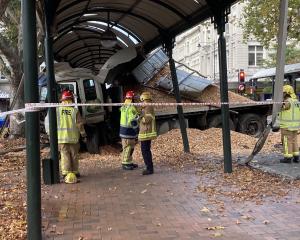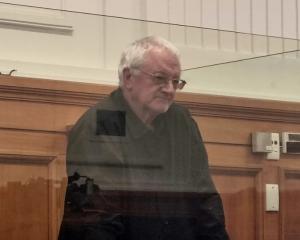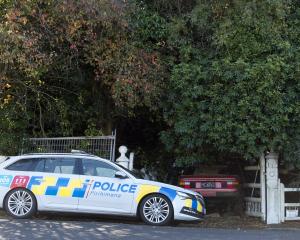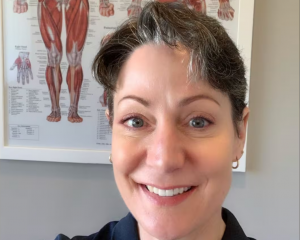There appear to be gaps in the government's data on Covid-19 that must be filled before a decision is made on reducing the lockdown level, two top advisors say.
Epidemiologist Michael Baker, who is on the Health Ministry's Covid-19 technical advisory group, said some of the data he needed to see to be confident of going to alert level 3 may not exist yet.
"There's a whole suite of data I would like to see, to make it really clear that we're ready to ... drop down our response level," he said.
Prof Baker told RNZ he had been asking the ministry for weeks for certain key data about border control, contact tracing and testing but had not received it, nor had the advisory subgroup he was on with four other epidemiologists.
"I don't think any of the epidemiologists I know have seen data covering all of these key measures."
The public deserved to see that data before the Cabinet decision on Monday about changing the alert level, Baker said.
"Someone needs to see these data to say, yes, the system's all performing adequately. I think that's really vital.
"I'm hoping these data will appear very soon, because I think it is a critical input for making a decision of this magnitude."
This was more detailed information than was available in the public statistics the ministry was putting out.
"We know we've seen cases occur in settlements on the West Coast that didn't seem to have an origin. So we really need that fine-grained data."
Border control systems may be effective, and the data for them may exist, but it might not exist yet in the right form to be analysed properly, he said.
"It's possible. I know getting the data into a robust form is a real challenge for our system because it has been under-resourced, progressively for many years. And this is really a massive increase in capability and expectations."
He said clear data showing whether contact tracing was good enough to loosen restrictions should be available, but he had never seen it despite asking the ministry repeatedly for it.
The ministry was not being secretive but faced a high workload combining data from a range of systems, he said, with hundreds of people working on it across different organisations.
"There are holes, yes, and there are data sitting in all sorts of different databases that are not compatible," Baker said.
"I know there's a lot of work happening on this and things move very fast, so these data may well be available very soon. I mean, that would be my hope ... we need to see these data because these are critical for telling us that these defences are all working effectively."
Auckland University Professor Shaun Hendy is expected to submit to the government tomorrow his team's modelling on the risks of an outbreak from easing the lockdown.
The team had about three-quarters of the data they needed, after improvements in how it was coming through in the past week, he said, but some of the contact tracing data was "really weak".
He said the quality of data on testing was about eight or nine out of 10, but it was not easy to compile.
"Some of that information is still sent around by fax these days, so you can imagine that's quite hard to transcribe. But we we are starting to get that information now".
"That's giving us confidence in our own estimates of the spread of the disease."
However, the team was struggling to get good data on contact tracing.
"We're at the bottom end of the scale," Prof Hendy said. "I understand the demands on the contact tracing operations at the moment, they're working as fast as they can. But that's a bit of a bit of a blind spot for us in our modelling."
"We have some really weak idea of how much that capacity could be scaled. So let's say we had another regional outbreak in a few weeks' time, how much resource can be deployed to one of the regions to contain that outbreak."
He was not confident they knew enough to make a call on going to alert level 3 region by region.
"If you're going to relax that region earlier than the rest of the country, then there's things you'd like to know about the way that public health is being deployed in that region that would minimise those risks," he said.
"I think that's a difficult call to make.
"I mean, we're watching the data [in] real time ... case numbers are falling and have been falling for a little while, we'll be more confident about our risk assessment come the end of the week."
The ministry had been aware of their need to get the data quickly, he said.
"It's been working pretty hard to try and fill the gaps and we've already seen some gaps filled."
The average contact tracing time for a given person was still unknown however, and Hendy said he expected it was simply not being recorded in detail yet.
Baker said the health system was doing its best to catch up.
Hawke's Bay medical officer of health Nick Jones said there needed to be more testing to gain a true picture of the disease in the region.
"The government has been very clear that we have plenty of testing capacity, we need to make the most of this to detect all possible cases and to ensure there is no community transmission before lifting level 4 restrictions," Dr Jones said.
He said there were 41 cases in the region, with 2276 people tested.
Several other DHBs said they had increased testing by swabbing people with very minor symptoms this week.
Some, including Wellington, Northland and the Bay of Plenty, were sending mobile clinics out to more remote areas.
Others were using advertising to encourage people to get tested or getting essential services to encourage people with minor symptoms to come forward.
The ministry said New Zealand now had one of the broadest suspect case definitions in the world, to encourage testing.
Its testing surveillance plan was "a living document" that was regularly reviewed by the epidemiology subgroup of the Technical Advisory Group, it said.












